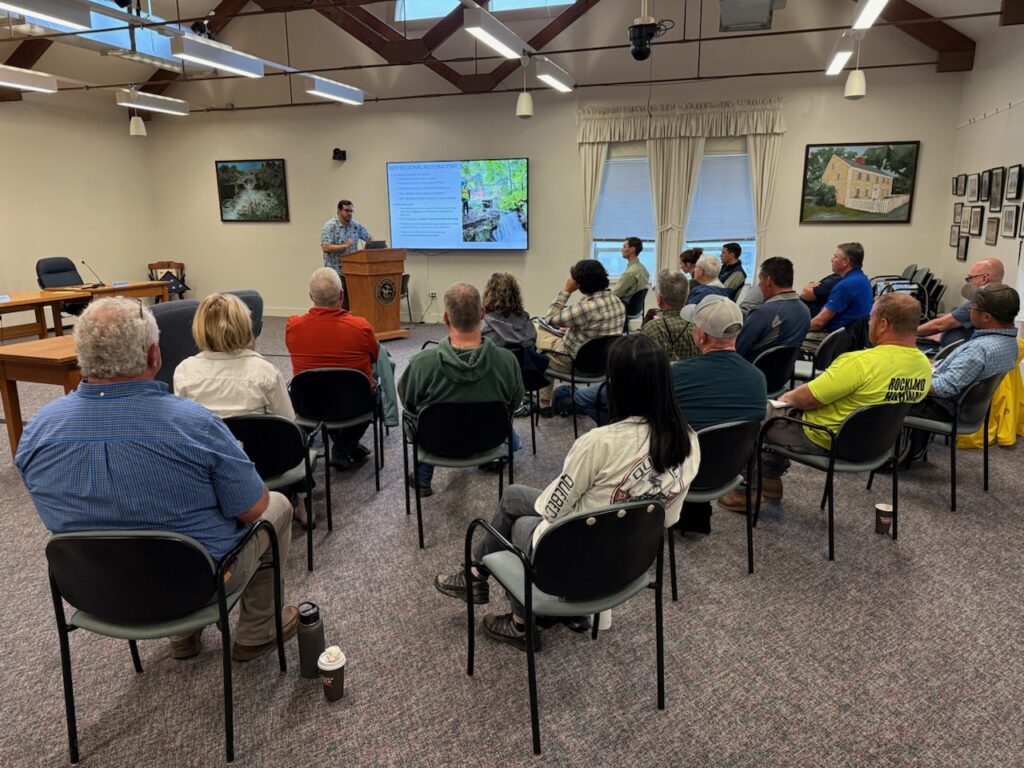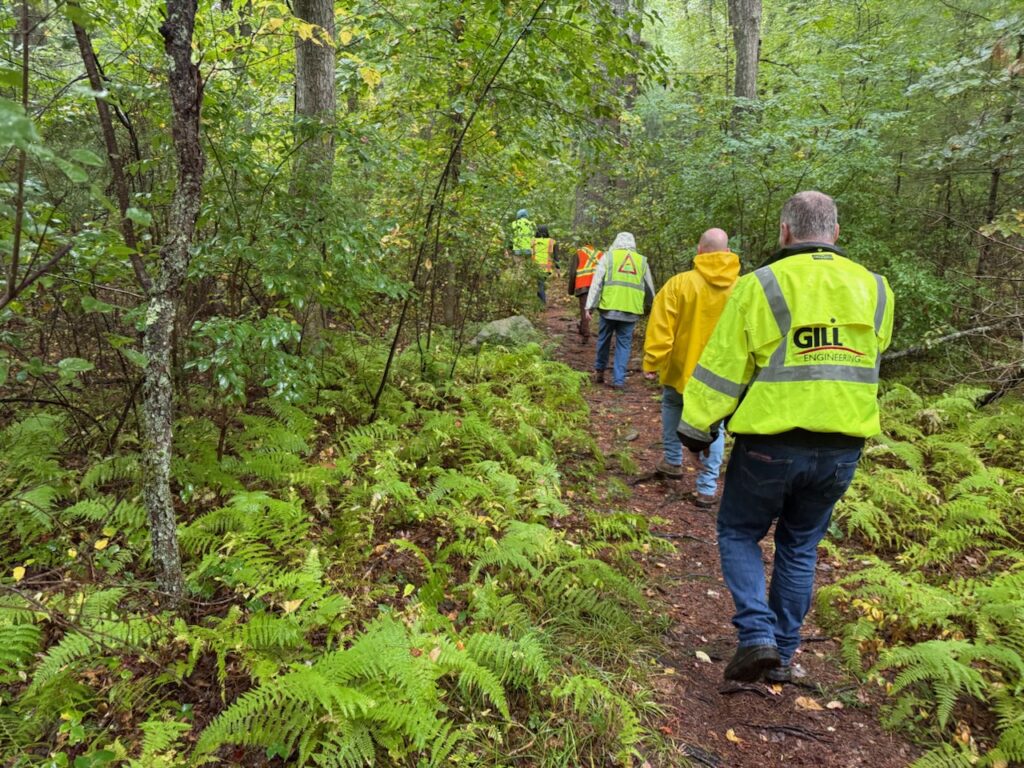 On September 24th, in partnership with Massachusetts Division of Ecological Restoration (DER) and Old Colony Planning Council, NSRWA hosted a culvert replacement workshop at Hanover’s Town Hall. This workshop was targeted primarily towards municipalities, who generally own and are responsible for maintaining streamflow infrastructure. Some of the communities that participated from our watershed included Weymouth, Rockland, Scituate, Hanson, Pembroke and Hanover.
On September 24th, in partnership with Massachusetts Division of Ecological Restoration (DER) and Old Colony Planning Council, NSRWA hosted a culvert replacement workshop at Hanover’s Town Hall. This workshop was targeted primarily towards municipalities, who generally own and are responsible for maintaining streamflow infrastructure. Some of the communities that participated from our watershed included Weymouth, Rockland, Scituate, Hanson, Pembroke and Hanover.
Participants learned about the Massachusetts Stream Crossing Standards, which help ensure that culvert upgrades are performed in a way that benefits the ecology of the site, while reducing potential risk of flooding. For example, culverts should be 1.2x wider than the stream that passes through them. This helps ensure that they are capable of handling occasional storm-driven high flows, and also provides dry passage for terrestrial animals. Additionally, the substrate in the bottom of culverts should match the natural streambed upstream and downstream of the culvert. This reduces the likelihood of displacement during floods, while also providing essential habitat for the fish and invertebrates that live in and pass through the area.
Importantly, participants were then given information about resources to help fund culvert replacement projects, which are often quite expensive. NSRWA and OCPC offered free support to towns within their focal areas, including culvert assessment using the North Atlantic Aquatic Connectivity Collaborative (NAACC) protocol, help with grant writing, and assistance with project management. Mass DER explained how the new ECO One Stop grant application system works. This is a streamlined application process, likened to the college system’s Common App, where municipalities can apply to multiple potential funding sources within one application.
 After the presentations, participants headed out into the field for a short hike along the Iron Mine Brook (a tributary to the Indian Head River). During the hike, they saw an example of a former culvert that was removed by NSRWA and the Town of Hanover and replaced with a pedestrian footbridge. The ultimate destination of the hike was a double culvert, which is undersized and currently poses challenges to debris passage as well as fish passage.
After the presentations, participants headed out into the field for a short hike along the Iron Mine Brook (a tributary to the Indian Head River). During the hike, they saw an example of a former culvert that was removed by NSRWA and the Town of Hanover and replaced with a pedestrian footbridge. The ultimate destination of the hike was a double culvert, which is undersized and currently poses challenges to debris passage as well as fish passage.
All in all, it was a great opportunity to come together and learn about the ways in which we can support each other to accomplish our combined goals: replacing failing infrastructure while improving fish passage, reconnecting the riverine ecosystem while reducing flood risk, securing funding and partners to help share the burden. We at NSRWA want to thank Mass DER and OCPC for their excellent presentations, and also wish to thank all the participants who came out on a rainy day to learn how to improve the infrastructure in their towns!
